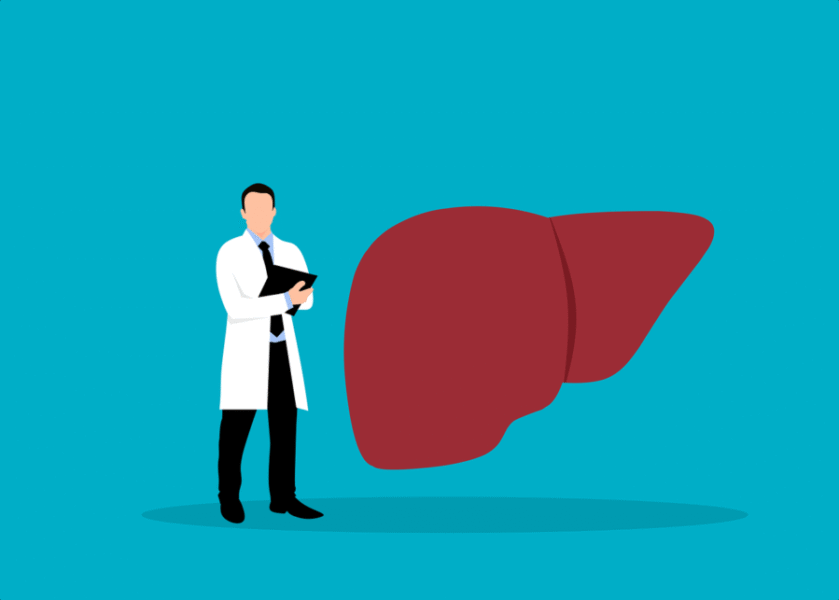A naturally occurring hormone in the body may hold the key to addressing one of the most prevalent liver diseases worldwide, according to new research published in Cell Metabolism.
Scientists have discovered that fibroblast growth factor 21 (FGF21) can reverse metabolic dysfunction-associated steatohepatitis (MASH) through a sophisticated coordination between the brain and liver.
MASH affects millions worldwide and is the progressive form of metabolic dysfunction-associated steatotic liver disease (MASLD), which impacts approximately 40% of adults globally. Despite its prevalence, treatment options remain limited.
The new study, led by researchers including Jesse P. Rose and Matthew J. Potthoff, provides crucial insights into how FGF21 works to combat this condition. Their findings reveal a dual-action mechanism that could inform more effective treatments for patients suffering from this increasingly common liver ailment.
“We demonstrate that the beneficial metabolic effects of FGF21 to reverse MASH are mediated through distinct mechanisms to independently lower hepatic triglyceride and cholesterol levels,” the researchers noted in their paper.
The study found that FGF21 operates through two distinct pathways. First, it signals to glutamatergic neurons in the central nervous system, which stimulates the reduction of triglycerides in the liver and reverses fibrosis. Second, it acts directly on liver cells (hepatocytes) to reduce cholesterol levels.
Using mouse models with diet-induced MASH, the research team discovered that FGF21 administration significantly improved liver health in multiple ways. Treatment reduced both triglyceride and cholesterol levels in the liver, decreased markers of hepatocyte damage, and reversed collagen deposition that characterizes liver fibrosis.
Interestingly, the brain-liver connection proved essential to FGF21’s effectiveness. The hormone increases sympathetic nerve activity to the liver, which suppresses the liver’s ability to create new fats through a process called de novo lipogenesis. When researchers blocked this brain-to-liver communication, FGF21 lost its ability to reduce triglyceride levels.
The discovery that FGF21 affects liver cholesterol levels surprised the researchers, as previous studies suggested the hormone doesn’t signal directly to hepatocytes. However, this study found that FGF21 promotes cholesterol movement from the liver into bile by increasing expression of transport proteins ABCG5 and ABCG8.
The findings come at a critical time, as MASH represents a growing public health concern. The condition is characterized by excess lipid deposition in the liver, which can progress to inflammation, hepatocyte cell death, and fibrosis. These changes increase the risk of cirrhosis, liver failure, and hepatocellular carcinoma if left untreated.
Dr. Potthoff and colleagues note that MASH is reversible prior to the onset of cirrhosis, making it “a critical stage to target with pharmacological intervention.”
The research has significant implications for drug development. Several FGF21-based analogs have already shown promising results in clinical trials for human MASLD and MASH. For example, once-weekly administration of efruxifermin (a bivalent FGF21-Fc fusion protein) or Pegozafermin (a glycopegylated FGF21 analog) improved liver fibrosis in patients with biopsy-confirmed MASH.
However, the new insights regarding the dual mechanism of action may help refine these therapeutic approaches. Understanding that FGF21 works through both brain and liver pathways could lead to more targeted treatments with fewer side effects.
The research team cautions that while their findings in mice are promising, further studies are needed to confirm whether the same mechanisms apply in humans. Additionally, questions remain about how different doses of FGF21 might affect hepatocyte and neuronal signaling, and whether the specific action of sympathetic nerve activity to the liver is required for FGF21-mediated reversal of MASH.
Nevertheless, this research provides valuable insights into what the authors describe as “a promising pharmacological target to treat MASH,” bringing hope to millions affected by this increasingly common liver disease.
If our reporting has informed or inspired you, please consider making a donation. Every contribution, no matter the size, empowers us to continue delivering accurate, engaging, and trustworthy science and medical news. Independent journalism requires time, effort, and resources—your support ensures we can keep uncovering the stories that matter most to you.
Join us in making knowledge accessible and impactful. Thank you for standing with us!

